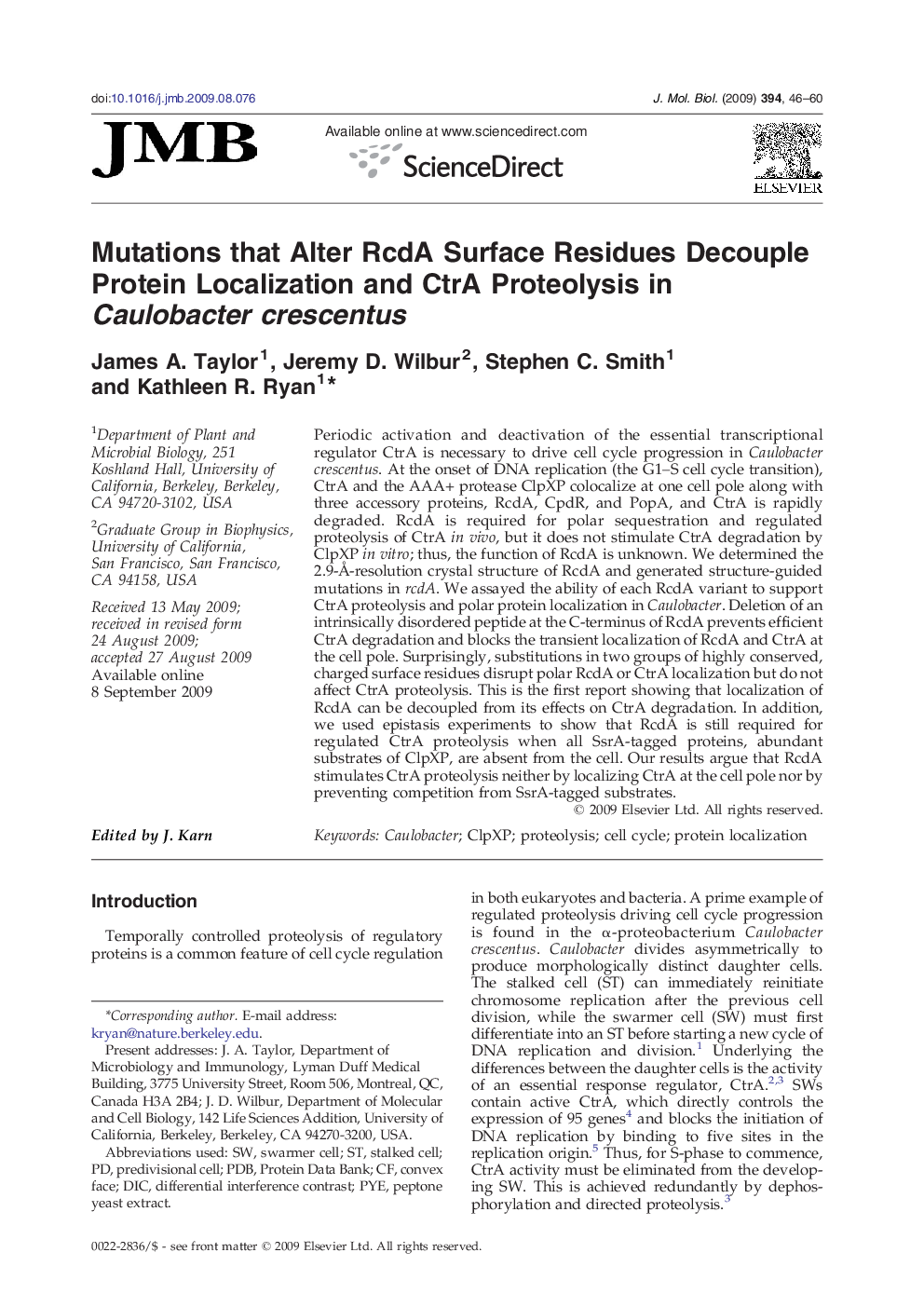| Article ID | Journal | Published Year | Pages | File Type |
|---|---|---|---|---|
| 2186116 | Journal of Molecular Biology | 2009 | 15 Pages |
Periodic activation and deactivation of the essential transcriptional regulator CtrA is necessary to drive cell cycle progression in Caulobacter crescentus. At the onset of DNA replication (the G1–S cell cycle transition), CtrA and the AAA+ protease ClpXP colocalize at one cell pole along with three accessory proteins, RcdA, CpdR, and PopA, and CtrA is rapidly degraded. RcdA is required for polar sequestration and regulated proteolysis of CtrA in vivo, but it does not stimulate CtrA degradation by ClpXP in vitro; thus, the function of RcdA is unknown. We determined the 2.9-Å-resolution crystal structure of RcdA and generated structure-guided mutations in rcdA. We assayed the ability of each RcdA variant to support CtrA proteolysis and polar protein localization in Caulobacter. Deletion of an intrinsically disordered peptide at the C-terminus of RcdA prevents efficient CtrA degradation and blocks the transient localization of RcdA and CtrA at the cell pole. Surprisingly, substitutions in two groups of highly conserved, charged surface residues disrupt polar RcdA or CtrA localization but do not affect CtrA proteolysis. This is the first report showing that localization of RcdA can be decoupled from its effects on CtrA degradation. In addition, we used epistasis experiments to show that RcdA is still required for regulated CtrA proteolysis when all SsrA-tagged proteins, abundant substrates of ClpXP, are absent from the cell. Our results argue that RcdA stimulates CtrA proteolysis neither by localizing CtrA at the cell pole nor by preventing competition from SsrA-tagged substrates.
